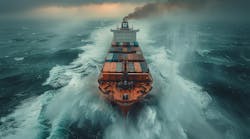Tide detergent is available nearly anywhere in the world. It may have a different formulation depending on the market. It may be formulated for hot wash or cold or for scrubbing along a river bank. "Wherever you see Tide on a retailer's shelf, you know it will be a quality product that is right for that market," claims Jeanne Reisinger, director of global customer service and logistics with consumer packaged goods giant Procter & Gamble Co. (www.pg.com).
"In the same way, I want to be able to buy a brand name warehouse provider I can count on anywhere in the world." However, she says, "That's not yet available."
Although largely satisfied with the third-party logistics providers (3PLs) P&G partners with, Reisinger considers finding an operator that walks its own talk the number one challenge to using 3PLs globally. "Most 3PLs offer similar services around the globe. The challenge is finding the ones that can live up to their sales pitch in terms of systems, integration and qualified staff in the warehouse," she suggests. "Our operation is only as good as the warehouse manager the 3PL puts in charge. The first 3PL that can consistently deliver will win big," Reisinger adds.
Consistency is not just an offshore problem. Reisinger notes performance is spotty everywhere. "I can have less-than-stellar operations in the U.S. as easily as anywhere else."
To counteract that spottiness and determine the best choice in service providers, P&G has devised a list of qualifying criteria it uses to evaluate strengths of vendors. "We developed a start-up, current best approach program around the world," she says. "We use our past knowledge and experience to minimize problems and increase the likelihood of success."
P&G has used this approach within regions for some time and, over the last quarter, has begun implementing it at the global level.
Global cosmetic manufacturer Estèe Lauder Companies Inc. (ELC) (www.elcompanies.com) uses 3PLs to support logistics in the diverse areas in which it manufactures, assembles and distributes. Manufacturing facilities are in the U.S., Canada, Belgium, the U.K. and Switzerland, while assembly occurs in China. Today, ELC has no universal global 3PL for its varied logistics needs. That conclusion stems from a number of different qualifying issues such as specific service capabilities, cost models and geographic coverage, according to Peter Goulding, executive director of global transportation and logistics with ELC.
Perhaps highest on Goulding's needs list is flexibility in the supply chain. "We insist the [3PLs] we choose be able to maintain flexibility in the markets they serve. As we track advertising and on-counter dates, we frequently make decisions close to delivery date, so we require a tremendous amount of flexibility to meet those dates," Goulding explains.
Whether the highest priority is flexibility or reliability, devising an effective 3PL contract is essential. "We include clearly defined key performance indicators (KPIs) in our contract language," Reisinger insists. "We're quite clear on service expectations. While including KPIs is not a new idea, we are writing more and more contracts that put part of the management fee at risk based on meeting those KPI standards."
ELC doesn't use the same 3PL contract around the globe, but it does build universal standards into each negotiating process. Goulding describes the cosmetic manufacturer's standard inclusions that tend to be around the following:
- Financials — will the 3PL be around to fulfill the contract?
- Security — important regardless of geography because of the nature of ELC's products;
- Evaluating the service requested — if the 3PL is simply warehousing product, ELC has standard metrics to evaluate performance. If they interact with units, the contract features a different, generally more complex set of metrics.
In the interest of fairness to all parties, Goulding notes contracts are based on a business profile. "We give the 3PL a representative profile of our business for an appropriate time frame, he says.
At the operations level, this profile concept is the best way to manage costs with 3PLs, suggests William Drumm, president and CEO of Establish Inc. (www.establishinc.com), a supply chain strategy consulting firm. "Base the contract on a profile of activities that will occur. The ideal arrangement relies on a characteristics profile of activities with an opportunity to review the contract when the profile changes significantly. 'Significantly' is the key word. It's not good to change the contract frequently for small variations," Drumm notes.
This type of collaboration is a key part in ELC's 3PL relationships. " Collaboration ranges from understanding the pressure points for each organization and managing through the pressure points that arise due to a number of issues relating to our need for flexibility — issues such as labor, capacity, or systems," says Goulding.
While ELC needs flexibility to adapt to a business profile that changes with peak selling seasons, P&G is reexamining its entire business model. "Today, we look at our business vertically. We're evaluating a more horizontal or endtoend perspective. We believe a horizontal approach would allow us to realize tighter accountability with individual suppliers and reduce variability in our longer supply chains," Reisinger notes.
Even though she insists 3PLs need to work on day-to-day execution, Reisinger acknowledges P&G values 3PLs as important business partners. "To help them improve, we need to give them visibility and share forecasts so they can see spikes. And we need to share strategic multi-year planning so they can see what new markets we plan to enter."
Shippers also need to help 3PLs understand how they might be affected as they change from vertical to horizontal management of the business, Reisinger adds. "We can help our logistics partners better run their operations by giving them the visibility they need."


